plist) and Bundles are probably so obvious to seasoned Mac/iPhone developers that they're not even worth mentioning, however for someone with a '100% .NET' background you can't take anything for granted. I had a -lot-bit of trouble getting iPhone Settings working with MonoTouch (see here), but now that I've figured it out it seems very simple. Here's a quick guide:1. Bundles are folders
Within your MonoTouch project, create a new folder (
right-click solution → Add → New Folder) and call it Settings.bundle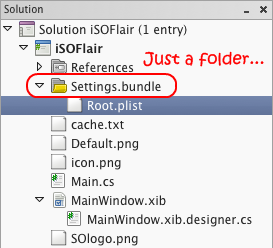
2. Plist files are some sort of hybrid Xml key-value
(
right-click solution → Add → New File... → Empty Text File) and call it Root.plist. You could add an existing plist-xml-formatted file if you like - but we're just going to create one from scratch (in the next step).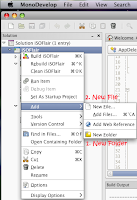
3. Edit Root.plist with the Property List Editor
The structure of the
plist is very specific - look for some doco or Chapter 10 of Beginning iPhone Development. In this example I've only used PSGroupSpecifier and PSTextFieldSpecifier but there are many other types (PSMultiValueSpecifier, PSToggleSwitchSpecifier, PSChildPaneSpecifier...).Double-click the Root.plist file inside MonoDevelop to open the Property List Editor - type carefully as there is no 'validation' and if you mis-spell (or mis-capitalize) something it just won't work:
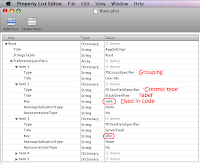
4. Set the correct build action for Root.plist
This is important (and I think the cause of my earlier problem) - you MUST tell the IDE to make sure this file is copied to the phone.
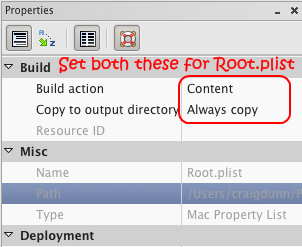
5. Access the settings
Use the
NSUserDefaults.StandardUserDefaults property to access the values set by the user.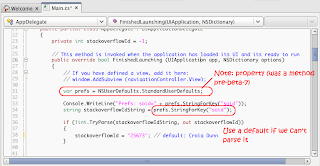
6. See/Edit "Settings" on the iPhone
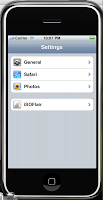
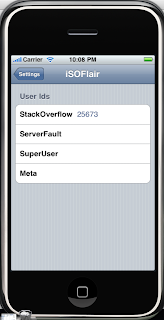
It's worthwhile noting that the 'useability' for these kinds of Settings is 'unusual' for desktop applications, but probably familiar to iPhone users... the settings for a whole swag of unrelated applications are grouped under the Settings icon (it's not necessarily obvious from with the application that they are available). The user must also quit the application to get to these settings - which means they're most useful for things that don't change much (eg. the users identity and servers in the Mail.app).
















